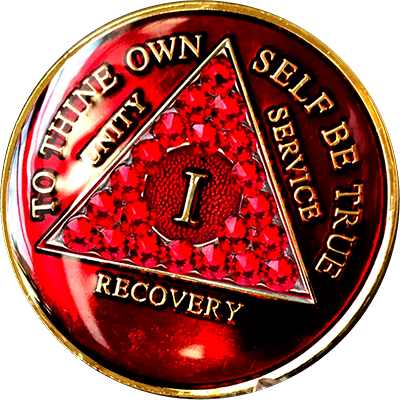Stepping into a sauna for the first time can feel like joining a long-running ritual: there’s heat, silence, and an unspoken set of rules. For beginners, that uncertainty can make the experience less relaxing than it should be. This guide walks you through the what, why, and how of sauna use—covering different sauna types, basic etiquette, essential safety tips, and what to look for when booking sauna treatments in Carmel IN. Think of it as the friendly roadmap that helps you enjoy the heat confidently and respectfully.
What is a sauna — and why people use them
A sauna is an enclosed room designed to produce dry or wet heat that elevates your skin and core temperature. People visit saunas for several reasons:
Relaxation and stress relief
Muscle recovery after exercise
Improved circulation and temporary easing of tightness
Social ritual or meditative quiet
Saunas come in different styles—traditional Finnish saunas (high heat, low humidity), steam rooms (lower temperature, high humidity), infrared saunas (lower temps but deeper radiant heat), and hybrid rooms. Each style creates a different sensation and has slightly different etiquette and safety considerations.
Types of saunas and what to expect
Traditional dry sauna
Usually wood-lined, heated by a stove or electric heater. Temperatures commonly range from 160°F to 200°F (70°C–95°C). Humidity is low unless water is poured over hot stones.
Steam room (wet sauna)
Steam rooms are cooler in temperature—often 110°F–120°F (43°C–49°C)—but humid, which can feel much hotter on the skin and lungs.
Infrared sauna
Infrared panels emit radiant heat that warms the body directly at lower ambient temperatures (typically 110°F–140°F). Many people find infrared saunas easier to tolerate for longer periods.
Portable and personal saunas
Lower heat, more variable construction, often used at home. Follow manufacturer safety instructions closely.
Before you go: basic preparation checklist
Hydrate well in the hours before your session—saunas cause sweating and fluid loss.
Avoid heavy meals or alcohol right before a sauna. Alcohol increases the risk of fainting and dehydration.
Skip sauna use if you’re feeling faint, feverish, or unwell.
Check facility rules: some spas limit session length, require reservations, or have clothing policies.
If you have medical conditions (heart disease, uncontrolled high blood pressure, pregnancy), consult a physician first.
Sauna etiquette: dos and don’ts
Good etiquette keeps the space relaxing for everyone and reduces risk.
Do
Shower before entering. Clean skin reduces bacteria and keeps the sauna hygienic.
Sit or lie on a towel. This is both respectful and practical—towels protect the benches and your skin.
Keep noise low. Saunas are a place to relax; quiet conversation is usually fine, but loud phone calls or music are not.
Respect personal space. Benches can be tight—leave a comfortable gap if it’s not crowded.
Follow posted time limits and staff instructions. Facilities set guidelines for safety and turnover.
Don’t
Don’t bring glass bottles or electronics into the sauna. Glass can break from heat changes; electronics can be damaged or be an annoyance.
Don’t pour water on heaters unless explicitly allowed. Some saunas provide a ladle and stones; others prohibit adding water.
Don’t apply oils or heavy lotions just before entering. They can stain benches and make surfaces slippery.
Don’t use the sauna if you’ve consumed alcohol or recreational drugs. Those substances impair judgement and increase dehydration and fainting risk.
How long should a sauna session last?
For beginners, short is safe: start with 5–10 minutes and see how your body reacts. Many experienced users do 10–20 minute stints, sometimes repeating for two or three rounds with cooling-off breaks and water between sessions. If you feel dizzy, lightheaded, or excessively uncomfortable, exit immediately and cool down slowly.
Hydration and cooling down
Saunas make you sweat; fluid loss can be significant. Drink water before and after sessions, not just during. After exiting, allow your body to cool gradually—take a lukewarm or cool shower rather than an icy plunge unless you are experienced and the facility endorses it. Cooling too quickly can cause shock in some people.
Safety for special populations
Pregnant people: Many providers recommend avoiding high-heat saunas, especially in the first trimester. Consult your healthcare provider about whether low-heat infrared sessions are appropriate.
People with cardiovascular issues: Saunas affect heart rate and blood pressure. Talk to your doctor before use.
Children and older adults: Both groups regulate temperature differently. Saunas for kids should be shorter and cooler; older adults should check with a physician first.
Those on medications: Certain medicines (diuretics, blood pressure drugs, and some antidepressants) can affect heat tolerance—ask a clinician.
Recognizing warning signs and what to do
Get out and seek help if you or someone else shows symptoms like: severe dizziness, nausea, chest pain, altered consciousness, or fainting. Facilities typically have staff ready to assist—alert them right away. If a person loses consciousness, call emergency services.
What to wear (and not)
Policies vary by country and spa. Common options:
Towel-only (typical in many traditional saunas and single-sex facilities).
Swimwear (common in co-ed public pools or wellness centers).
A clean, breathable robe for walking to and from the sauna.
Avoid heavy fabrics that trap sweat and synthetic materials that don’t breathe.
Cleanliness and courtesy
Wipe bench space with your towel, leave the area as you found it, and follow any disinfecting rules the spa posts. If you notice maintenance or hygiene issues, tell staff politely—reliable facilities appreciate that feedback.
How often to go
Frequency depends on your goals and tolerance. For relaxation and recovery, 2–4 short sessions per week is common for regular users; for medical or therapeutic programs, follow the provider’s guidance. Don’t overdo it—regular moderate exposure is safer and more sustainable than occasional extremes.
Choosing a trusted facility for sauna treatments in Carmel IN
If you’re searching for sauna treatments in Carmel IN, look for facilities that:
Clearly display temperature and humidity controls.
Maintain strict hygiene standards (clean towels, regular bench cleaning).
Have trained staff on duty and clear emergency protocols.
Offer single-session pricing or trial passes so you can test the environment before committing to packages.
Provide transparent rules about clothing, heaters, and ladle use.
A trusted local wellness center will also explain sauna types they offer (infrared vs traditional), recommended session lengths, and aftercare—this transparency is a hallmark of reliable, results-driven facilities.
Case study: easing into sauna use — a practical example
Maya, a recreational runner in Carmel, wanted to try saunas to speed recovery after weekend long runs but felt intimidated by the spa environment. She chose a reputable local wellness center that offered individual infrared sauna pods and a clear set of guidelines.
Her plan:
Week 1: One 10-minute infrared session after an easy run, followed by water and a warm shower.
Week 2: Two 12-minute sessions mid-week and post-run, with a cooling towel between sessions.
Week 4: Increased to 15-minute sessions as she monitored hydration and sleep quality.
Outcome: Maya reported reduced muscle soreness, better sleep, and increased familiarity with sauna etiquette (towel use, quiet time). Her cautious, incremental approach let her enjoy benefits while staying safe and respectful of the facility and other guests.
Final tips for beginners
Start slow and listen to your body. The heat should feel like relief, not punishment.
Hydrate proactively—sweating is healthy in moderation, but dehydration is not.
Ask staff about temperature ranges and whether pouring water on the heater is allowed.
Use saunas as part of an overall recovery and wellness plan—combine with sleep, nutrition, and moderate activity for best results.
If you plan to seek therapeutic sauna treatments, confirm the facility’s credentials and whether staff are trained for specialized protocols.
Conclusion
Sauna use can be a deeply restorative practice when approached with respect, common-sense safety, and a little local savvy. Whether you’re looking for relaxation, post-workout recovery, or a social ritual, understanding basic sauna etiquette and safety will make your visits more enjoyable for you and everyone around you. If you’re searching for sauna treatments in Carmel IN, Body Lyft System offers trusted, well-maintained facilities that prioritize hygiene, clear guidelines, and transparent pricing—so you can step in, relax, and let the heat do its work with confidence.
































